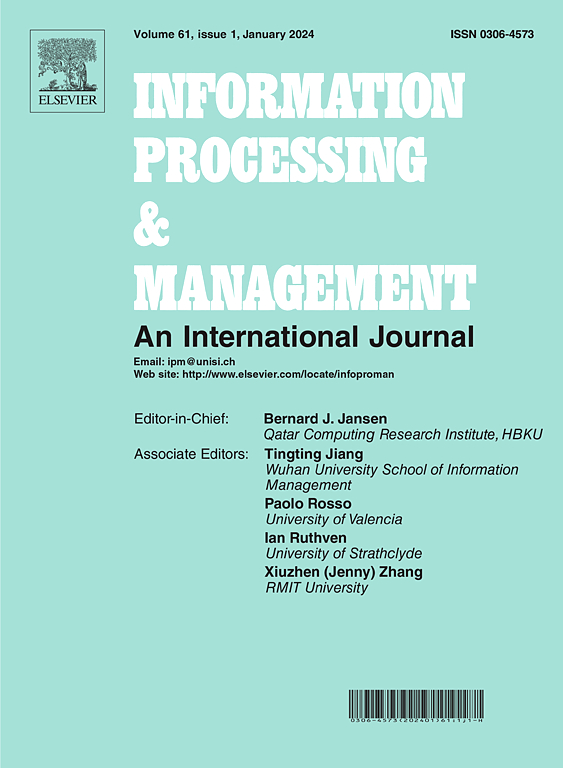OVED-Rank: A ranking scheme to evaluate complex network spreaders’ influence through the concept of effective distance and orbital velocity
IF 6.9
1区 管理学
Q1 COMPUTER SCIENCE, INFORMATION SYSTEMS
引用次数: 0
Abstract
This paper explores the influence of complex network spreaders, which is the most studied problems in network science. However, developing an efficient technique to handle this task remains challenging due to its NP-hard nature. Several traditional approaches to identifying the influence of complex network spreaders usually rely on algorithms for determining network paths that are more complex, such as Dijkstra’s algorithm or Bellman-Ford’s algorithm, which require significant computational resources and do not always take into account the location of nodes in a network. To cope with these issues, this paper proposes a new method called OVED-Rank, which is inspired by the orbital velocity formula for the influence of key spreaders in complex networks. It incorporates an advanced metric effective distance replacing traditional measures like Dijkstra’s distance to streamline computations and decrease processing times. OVED-Rank combines the degree of a node, the k-shell index, the number of triangles that form part of a node, and the length of paths connecting the nodes. Unlike traditional methods, OVED-Rank does not rely on the usual complex shortest-path algorithms. Instead, it uses effective distance, which makes the calculations easier and less complex. In addition, it improves predictability by taking into account the characteristics of neighboring nodes. The robustness and effectiveness of OVED-Rank are thoroughly vetted through rigorous testing on various network, including both synthetic setups and real-world undirected, unweighted networks. The experimental results are compelling, indicating that OVED-Rank not only meets but often exceeds the performance of existing methodologies.
oded - rank:一种通过有效距离和轨道速度的概念来评价复杂网络传播者影响力的排序方案
本文探讨了复杂网络传播者的影响,这是网络科学中研究最多的问题。然而,由于其NP-hard的性质,开发一种有效的技术来处理这项任务仍然具有挑战性。识别复杂网络传播者影响的几种传统方法通常依赖于确定更复杂的网络路径的算法,如Dijkstra算法或Bellman-Ford算法,这些算法需要大量的计算资源,并且并不总是考虑网络中节点的位置。为了解决这些问题,本文提出了一种新的方法OVED-Rank,该方法的灵感来自于复杂网络中关键传播者影响的轨道速度公式。它采用了一种先进的度量有效距离,取代了传统的度量方法,如Dijkstra距离,以简化计算并减少处理时间。overd - rank结合了节点的程度、k-shell索引、构成节点一部分的三角形数量以及连接节点的路径长度。与传统方法不同,OVED-Rank不依赖于通常的复杂最短路径算法。相反,它使用有效距离,这使得计算更容易和不那么复杂。此外,它通过考虑相邻节点的特征来提高可预测性。OVED-Rank的鲁棒性和有效性通过对各种网络(包括合成设置和现实世界的无向、无加权网络)的严格测试进行了彻底的审查。实验结果令人信服,表明OVED-Rank不仅满足而且经常超过现有方法的性能。
本文章由计算机程序翻译,如有差异,请以英文原文为准。
求助全文
约1分钟内获得全文
求助全文
来源期刊

Information Processing & Management
工程技术-计算机:信息系统
CiteScore
17.00
自引率
11.60%
发文量
276
审稿时长
39 days
期刊介绍:
Information Processing and Management is dedicated to publishing cutting-edge original research at the convergence of computing and information science. Our scope encompasses theory, methods, and applications across various domains, including advertising, business, health, information science, information technology marketing, and social computing.
We aim to cater to the interests of both primary researchers and practitioners by offering an effective platform for the timely dissemination of advanced and topical issues in this interdisciplinary field. The journal places particular emphasis on original research articles, research survey articles, research method articles, and articles addressing critical applications of research. Join us in advancing knowledge and innovation at the intersection of computing and information science.
 求助内容:
求助内容: 应助结果提醒方式:
应助结果提醒方式:


